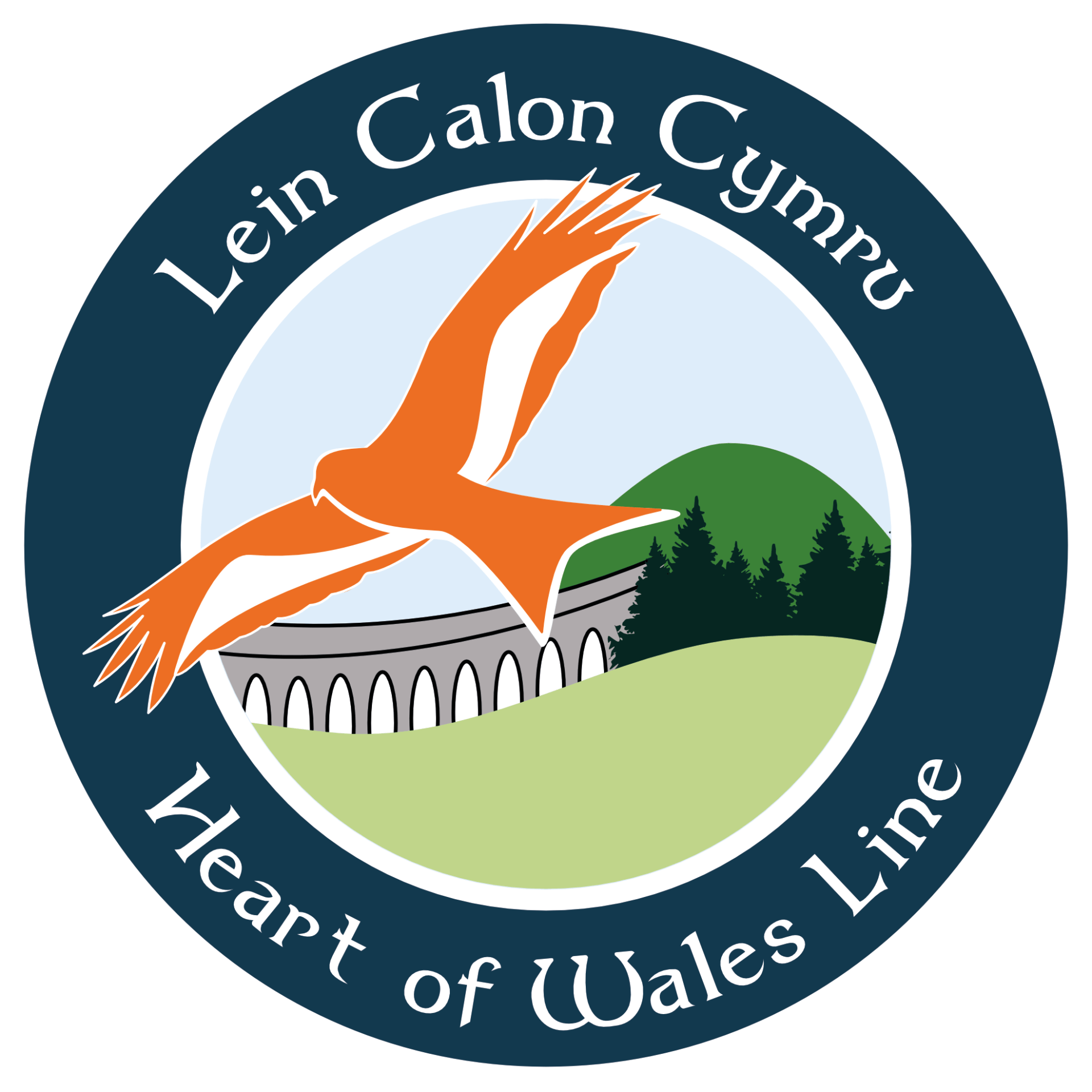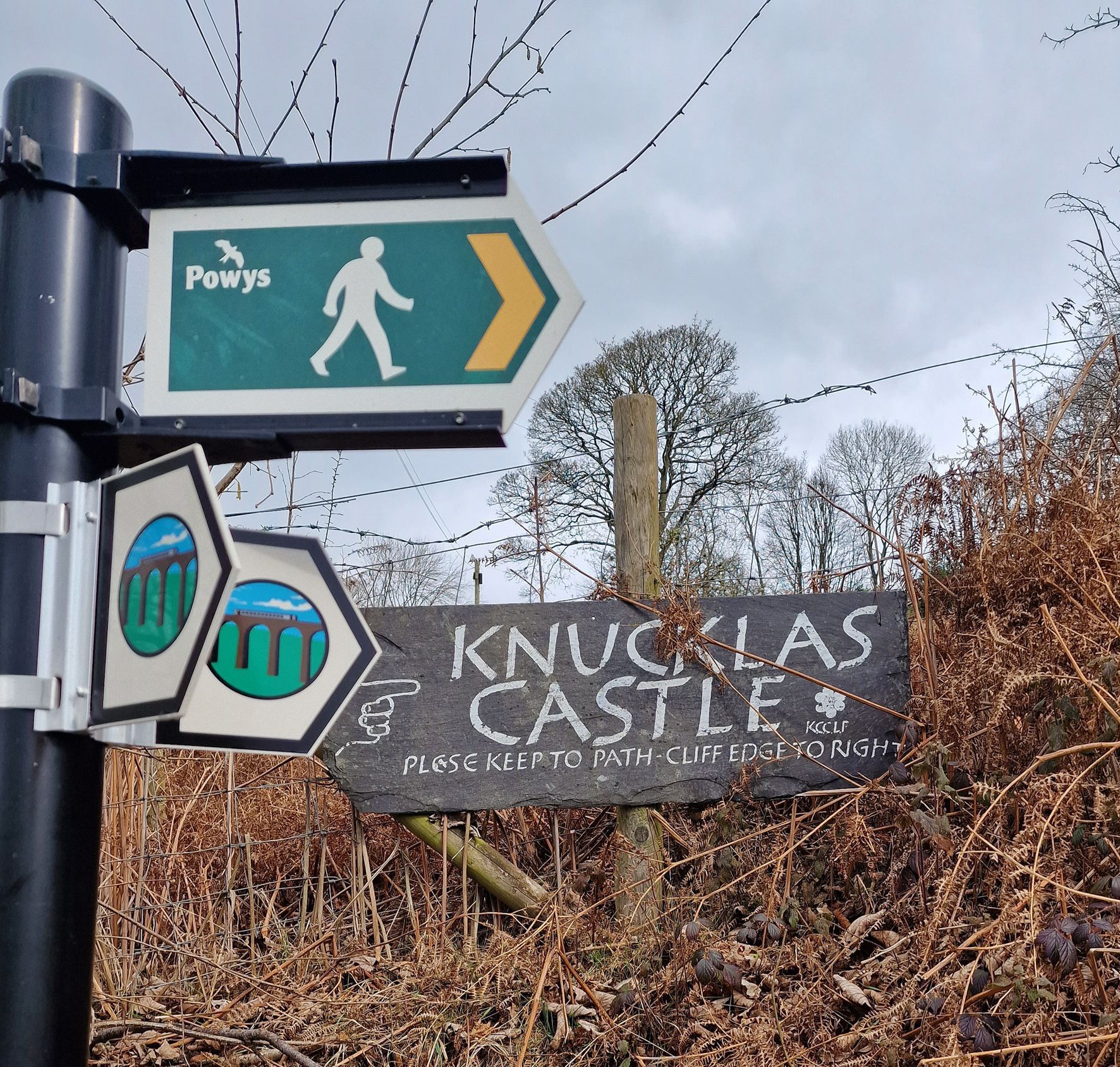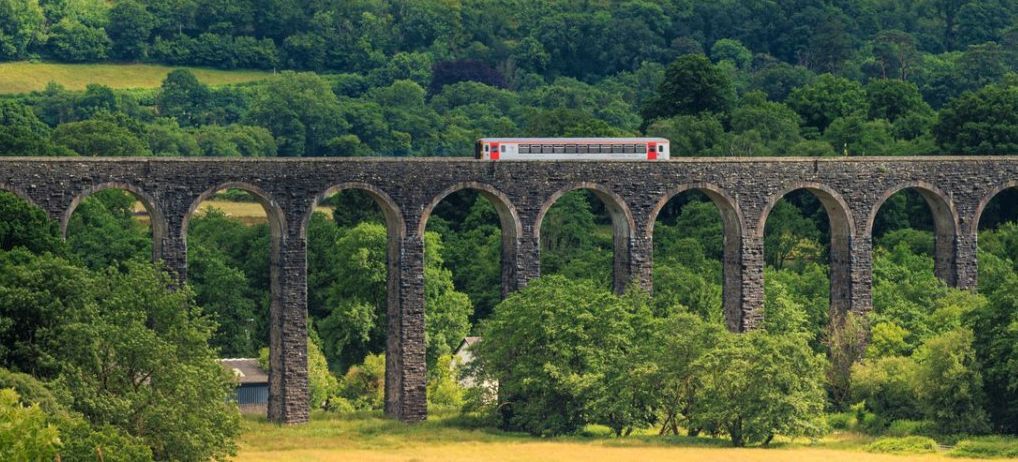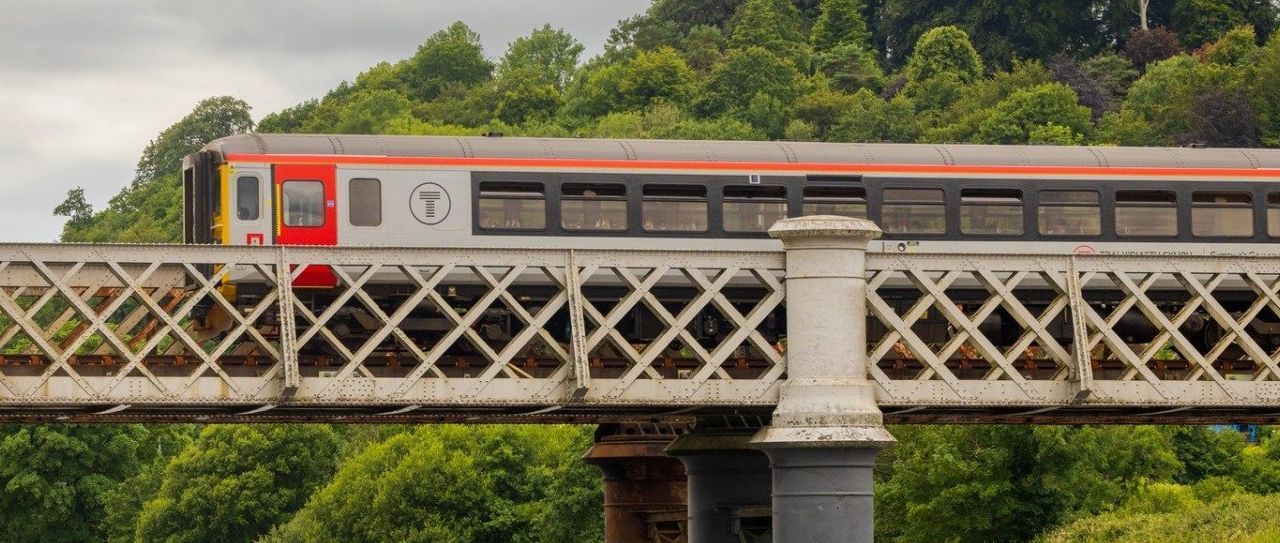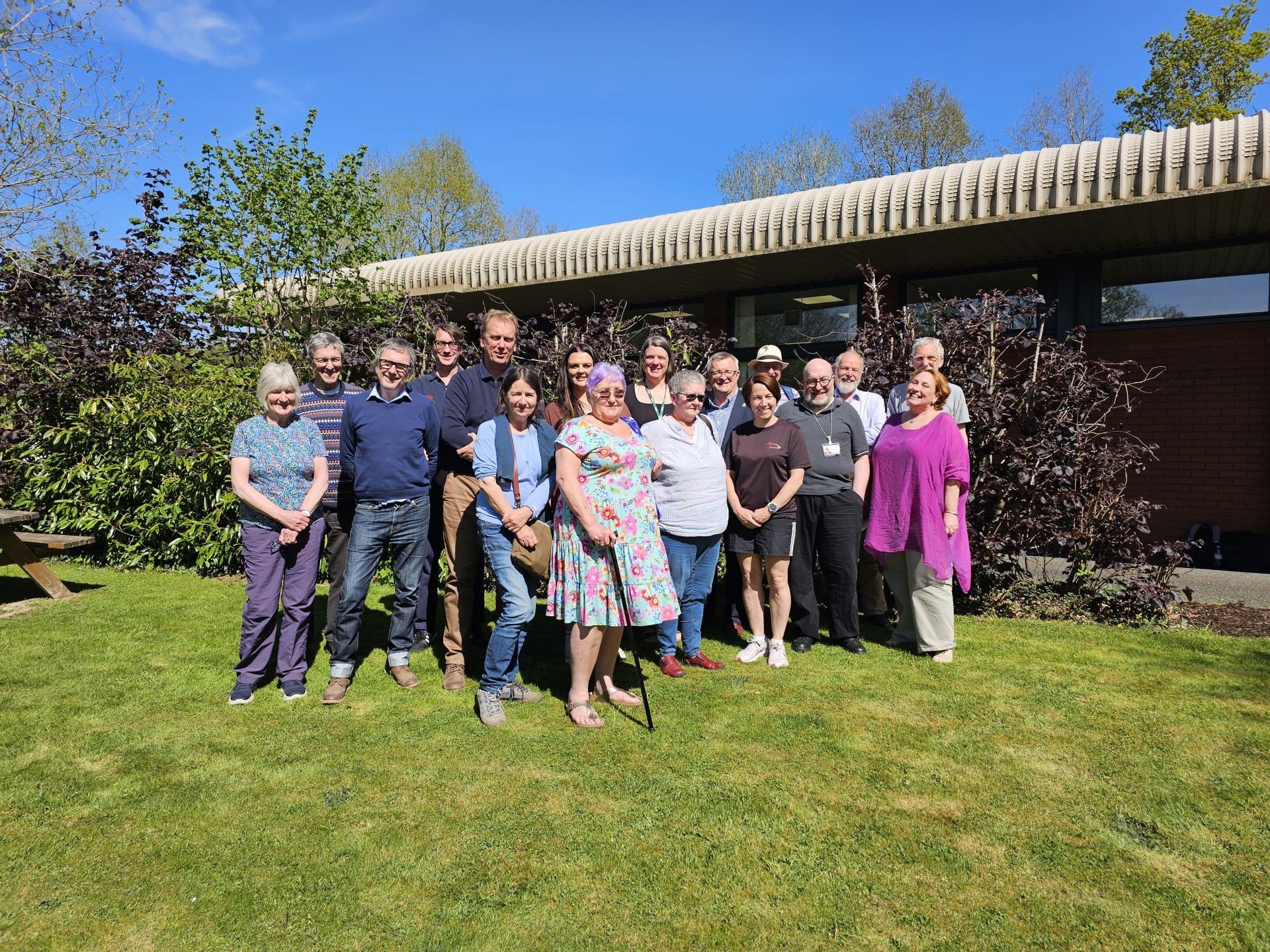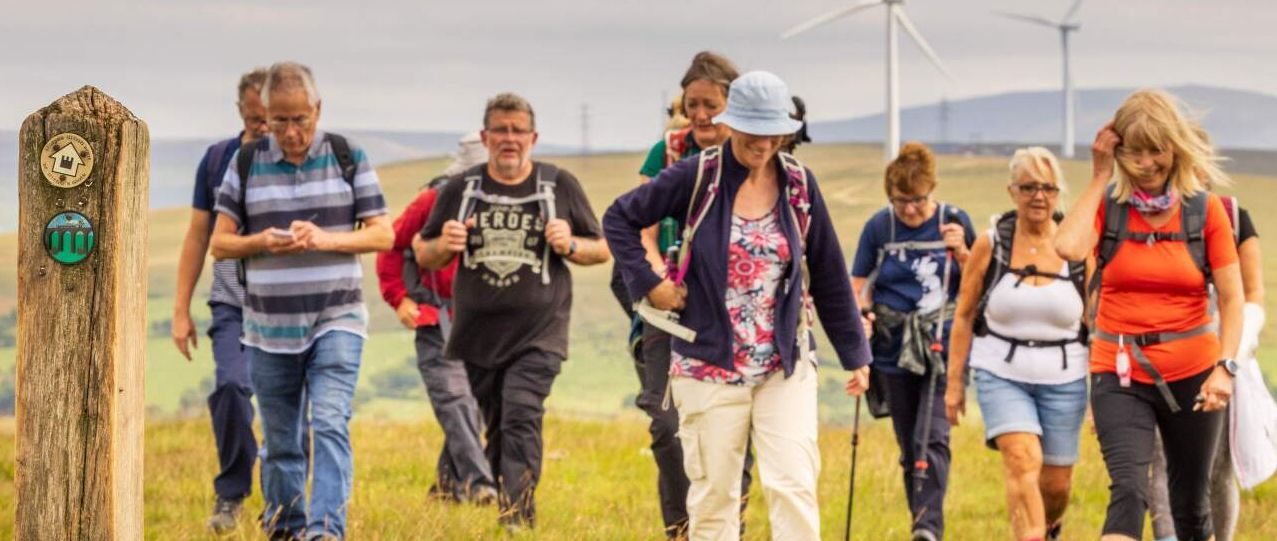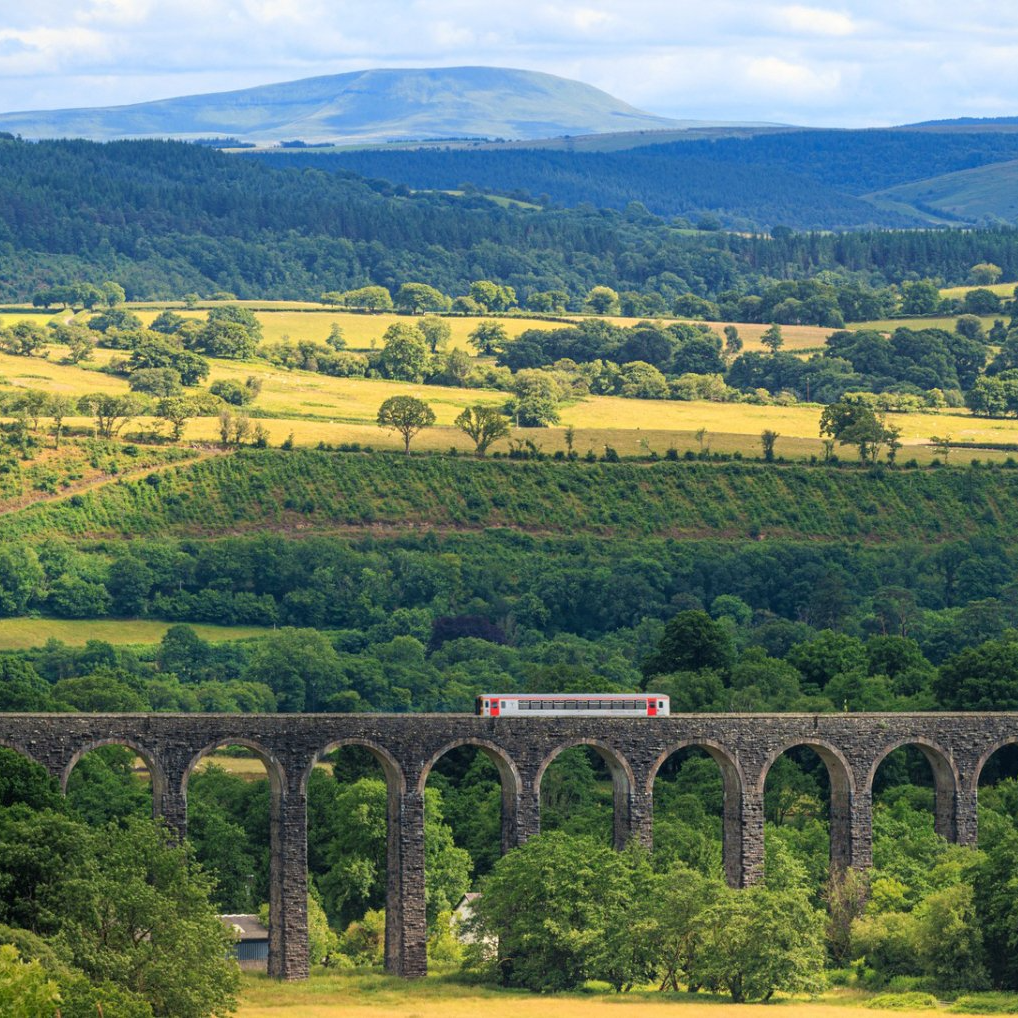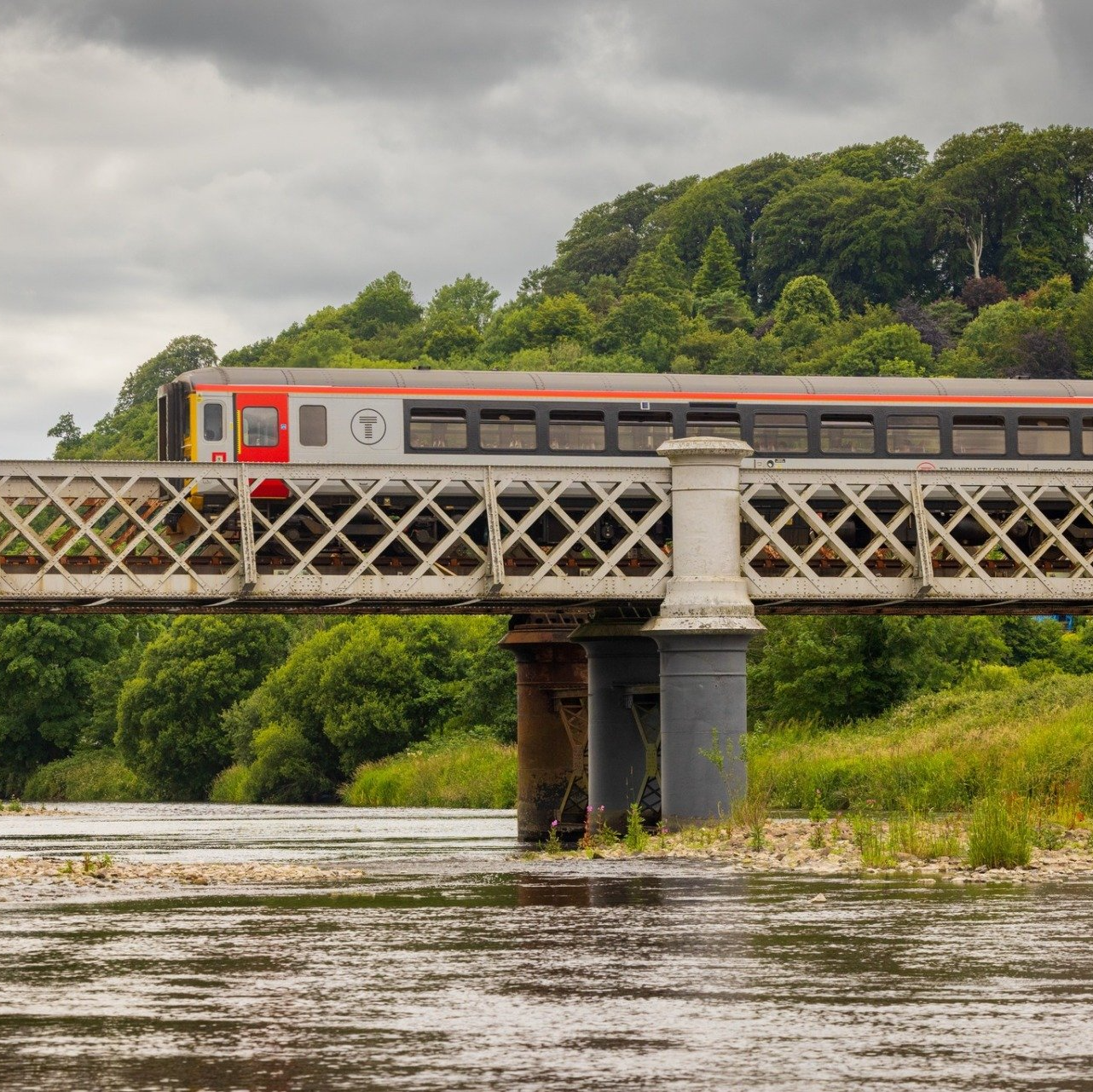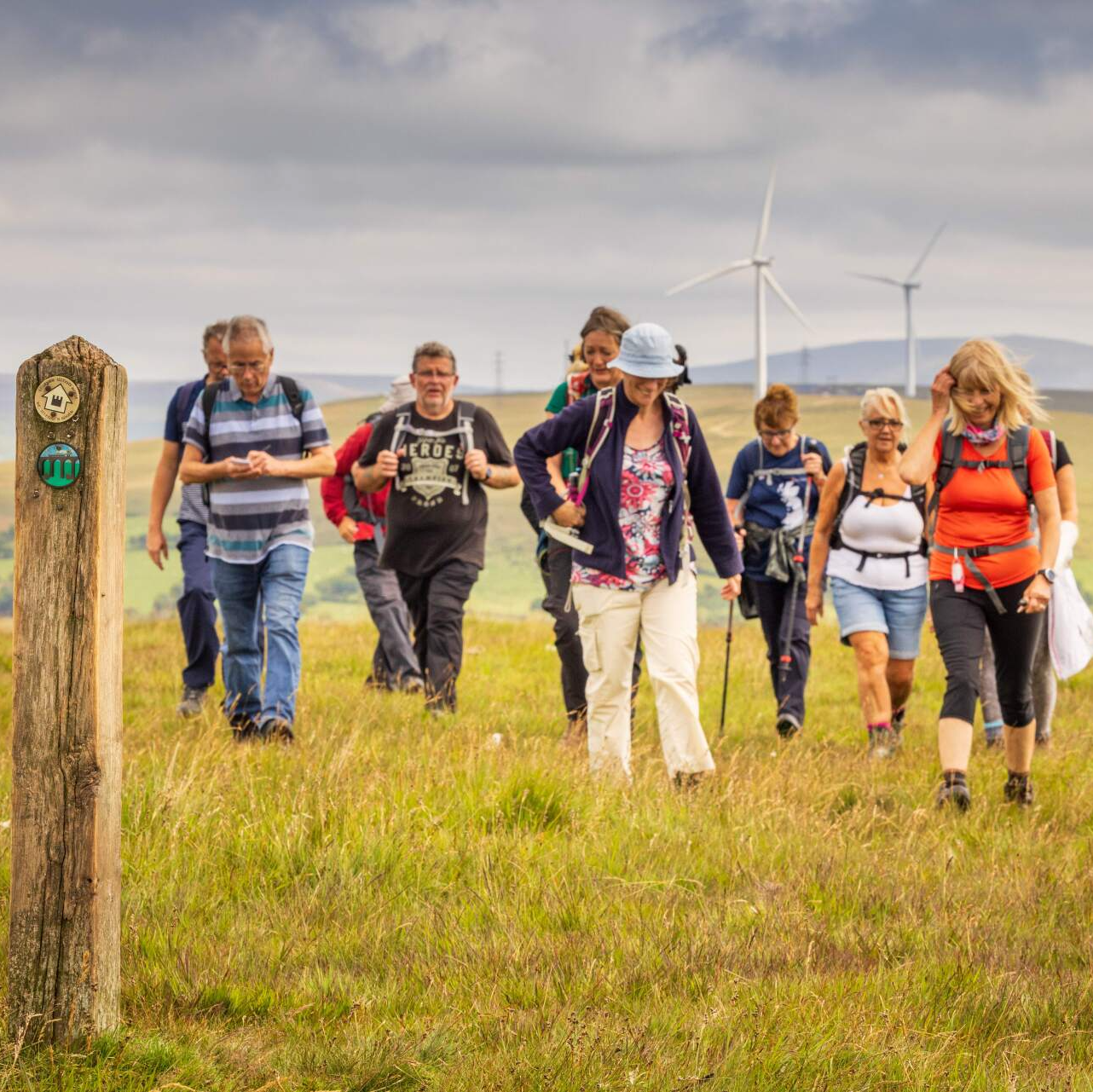Knucklas Railway Station
Short Circular Walk
| WALK | |
|---|---|
| Distance | 4.4km | 2.7 miles |
| Terrain | Road, fields and hills track |
| Difficulty | Elevation gain is 132m. Steep climb and descent to and from the castle. Some stiles |
| Warnings | Walking on a small road with no pavement. Railway crossing |
Overview
This route takes you through the pretty village, allows a walk under and views of Knucklas Viaduct as well climbing up Castle Hill, where the former ramparts now offer an undulating viewpoint of the surrounding hills and have the added attraction of the Dragon’s Tooth sculpture. The route back deviates via the tiny hamlet of Heyope. Sections of this route follow the Heart of Wales Line Trail and you’ll see several viaduct ‘roundels’ on the footpath signs.
Description ** additional information boxes
From Knucklas station platform descend the ramp and at the bottom walk downhill through the housing estate to the road junction. Turn left and when you get to the Castle Inn pub take the right -hand fork. This leads you to a little stone bridge across the river where you cross over and head slightly left to the uphill lane between the houses, to the right of the old red phone box.
Walk up this lane which offers excellent views of Knucklas viaduct ** and railway line to your left as it climbs. Eventually the road bends sharply to the right and as it does so, you will see a signpost and entrance to Knucklas Castle hill on your right. Go through the gate and climb the steep woodland hill, going through another gate as you do. The path bring you to a sign pointing you left. Follow this until you come to the next sign further up which points to the right. Follow any of the paths which will take you all the way up to the grass-covered castle remains. At the very top you have panoramic views of the Teme Valley, the hills of Offa’s Dyke and a lovely wooden ‘Dragon’s Tooth’ sculpture by Rolf Hook.
To descend from the castle head back the way you came, using any path. When you get to the bottom of the steep woodland and come out onto the road again, instead of turning left, go down the private drive directly ahead of you. Just along on the left-hand side there is a gap and you’ll see a stile. Go over this and then safely and quickly, cross the railway track, making sure you cannot see or hear any trains approaching. Once across, you will see another stile heading into a field.
In the field turn right and walk along the top boundary for 3 fields. You will have the wooded railway embankment on your right. When you reach the fourth field, you head down and across the field to a stile in the hedge. Beyond it you should be able to see the church. Once over the stile, head in the direction of the church and you should soon see a metal bridge going over a stream below the field. Do not go through the gate into the next field, instead descend carefully to the metal bridge and cross over into another field. Head up the hill towards the church. The stile for the public footpath goes into a farm to the left of the church but you may prefer to go through the field gate in the church wall (further along to the right) that takes you through the churchyard of the pretty St David’s Church.
When you leave the church via the main gate turn left and follow this small road all the way back into Knucklas. When you arrive at the viaduct there is an information board to read. Go underneath and turn right immediately. This residential road leads you back to the pub from the rear and from here you retrace your steps back to the station by following the road and turning right after the bus stop onto ‘Glyndwr’ Road which leads up to the station.
** Knucklas Viaduct
The viaduct was built by the Central Wales Railway Company, was one of two major engineering works which were necessary for the construction of the railway from Knighton to Llandrindod Wells that took place between 1860 and 1865. The company’s chief civil engineer was the Scottish railway pioneer Henry Robertson (1816 – 1888). He had already gained considerable experience in the design and construction of railways in the Welsh Marches and is generally credited with the design of Knucklas Viaduct. It is also said that the design features of the viaduct were heavily influenced by the then owner of the remains of Knucklas Castle. He insisted that if stone from the castle remains was required for use in the construction of the viaduct, then the viaduct must include some of the features of a castle. There is certainly strong evidence that some of the stone used as the viaduct’s core material was indeed quarried from the castle remains.
The viaduct is a straight structure 190 yards in length and is built principally of rough stone although it includes some brickwork within its piers. It has thirteen arches each spanning 35 feet 9 inches and at its maximum height it is about 75 feet above the valley floor. At both ends there are substantial twin semi-circular towers each of which has a large Christian cross incised deeply in the stonework.
